- Home
- Stephen Baxter
Last and First Contacts (Imaginings) Page 4
Last and First Contacts (Imaginings) Read online
Page 4
‘Just Elstead, please. Good guess, Susie. But the accelerator is only a means to an end.’
‘And I don’t see why you would put a bathyscaphe in the middle of the desert.’
‘One minute,’ Junge said.
Elstead said, ‘So why do you think I asked you here?’
I shrugged. ‘With respect, your ego is everything. I’m here as, what, an unbiased witness? My job will be to write up this chapter in your hagiography.’
He laughed, evidently not offended. ‘I couldn’t have put it better. And, aside from the money, what made you come?’
‘If you succeed, fine. If you don’t, this monumental folly will make an even better story.’
‘Fair enough. Let’s hope we both get what we want.’
‘Fifteen seconds,’ Junge said. ‘Everything is nominal. Ten. Nine …’
‘I don’t think we need a count,’ Elstead said.
So we sat in silence. Elstead seemed relaxed, unbearably confident. Junge was focussed on his machinery, the born technician. Only I grew tense.
There was a kind of jolt. I felt as if I was falling; my chest pushed up against my harness. Startled, I asked, ‘What is this, some kind of elevator?’
‘Look at your pendant,’ Elstead said. ‘Old trick I learned from the Soyuz cosmonauts …’
The crucifix was floating, the chain twisted.
‘We’re in free fall,’ Elstead said.
‘Why? How? We’re buried in the dirt.’
‘Not any more,’ Junge said. ‘Elstead, the external monitors are working.’
‘Cameras on the outer hull,’ Elstead explained to me. ‘Walter, let’s see out.’
Junge tapped a control. The wall displays cleared of their readouts, to show what was now beyond the hull of the Bathyscaphe.
Stars.
‘We have fallen away from the Earth,’ Elstead said, his grin demoniacal in the starlight. ‘And, far more importantly, Susie, we have fallen into time …’
I threw up.
Elstead and Junge had both been prepared. Elstead had his boy-astronaut experience on the Soyuz, of course, and he had sent poor Junge for flights on a Vomit Comet. For me, spacesickness pills stopped the hurling, but I was fragile for the first hours of our journey – for such I now, tentatively, accepted it to be, though I still didn’t understand where we were going or how we were getting there.
I spent much of that time away from the bridge, exploring the Bathyscaphe. Some kind of displacement activity, no doubt, focussing on the fixtures and fittings rather than what lay beyond the walls. But I did need to learn to get around in free fall.
The core of the Bathyscaphe was a cylinder ten metres tall, maybe five wide. It was divided into three levels. The middle deck was the bridge, centred on our three couches. The upper deck, through which Elstead had led me from the surface, was a living space – cabins, a galley, washrooms. The lower deck was sealed off; it contained computer banks, a closed-system life support, and our power supply, a small nuclear plant. The decks were connected by ladders that were just as easy to navigate without weight. Elstead had borrowed Space Station design elements – the Velcro pads on the walls to which you could stick pens or handhelds, the strong colour scheme to give you a sense of orientation.
Our cylindrical hab was contained inside an outer hull, a sphere of hardened steel. The space between the hab and the hull was filled with – well, something strange.
I did try to sleep that night, in my bunk (now I found out what the straps were for). I kept dreaming I was falling, for so I was. I had a fantasy that we were plummeting down some vast shaft into the centre of the Earth.
But Junge showed me some of the raw feed from the hull cameras. If he swivelled the viewpoint I could see the curving hull itself, adorned with the Stars and Stripes, and the logos of Elstead’s companies, and bits of Mojave dirt clinging to the metal. And whenever the cameras tipped away from the ship, they filled up with stars.
Twenty hours after the ‘launch’, Elstead summoned me by intercom. ‘We’re approaching our first milestone. You will want to see this.’
Reluctant, fearful, I hauled my way to the bridge. The three couches on their spindly catwalk were suspended in a star field. I pulled myself over the catwalk and strapped myself into my seat. There was no sense of motion, but it made me feel more secure.
It seemed to me that the stars swam, constellations morphing like dreams. And behind the sprinkling of stars was something new, a cloudy veil; I thought I could make out colours, gold and brown. That too shifted, like a cloud seen through raindrops. I had no real understanding of what I saw.
Junge was locked into his machinery, but he was actually more empathetic than Elstead, who wanted only to dazzle and impress me, and he tried to explain. ‘Everything you see is processed. For one thing the light that falls on the ship’s hull is blueshifted – that is, Doppler-shifted. We have to render the hard rain of photons into something palatable to the eye.’
I knew from speed-trap technology that Doppler shift had something to do with relative velocities. ‘Blueshifted by what? Are we moving so rapidly?’
‘No,’ Elstead smoothly. ‘The blueshift comes from our falling through time. And our, umm, velocity is increasing. Maybe you can tell that from the way the nearby stars are swimming around the sky. Sol is one of a crowd of stars swarming around the giant black hole at the heart of the Galaxy. But beyond you can see another galaxy altogether – Andromeda. Two million light years away, the most distant object you can see with the naked eye. It’s just a faint smudge. In our day.’
The spangled cloud I saw was no faint smudge.
Junge pointed to one star, the brightest. ‘There is our sun. We haven’t come so far, really.’ Again he was trying to orient me, to comfort me. But I thought the sun’s light was red-tinged.
Elstead called, ‘I guess it’s time you started asking your questions, Susie. The two most basic must be – how are we journeying through time, and why?’
‘Or maybe, how are you pulling off this monumental hoax?’
Elstead just laughed. Nothing I said ever seemed to offend him. ‘Where do you want to start?’
‘All right. How?’
Elstead nodded at Junge. ‘That’s the engineer’s department.’
Junge said, ‘The details are somewhat intricate. The principle is simple. Buoyancy…’
We delved into particle physics.
The universe is made up of several kinds of stuff. The visible matter, the ‘baryonic’ of which you and I are composed, is a mere trace, far outweighed by ‘dark matter’, mysterious stuff so evanescent it passes through the light stuff as if it wasn’t there, and interacts with it only through gravity. It’s so wispy in fact that not a single particle of it was detected until hypersensitive facilities came online in the late 2010s. But both kinds of matter are overwhelmed by a third sort of stuff called ‘dark energy’.
‘Dark energy is a kind of antigravity field,’ Elstead said. ‘It is driving the expansion of the universe. And we know, since 1990s observations of distant supernovae, that about six billion years ago the expansion, having slowed since the Big Bang, began to accelerate. Hence we know the dark energy field is becoming dominant.’
Junge said, ‘At any moment any volume in the universe – like this ship, Susie, or your own body – contains a mixture of these substances, dark and light matter, dark energy. But as time goes on, the dark energy component increases. And what we have done, with the facility under the Mojave –’
‘The particle accelerator.’
‘– is to find a way to increase the strength of the dark energy field in a specified volume. Specifically, in the Bathyscaphe’s interhull space.’
‘How?’ I asked, suspicious. ‘I thought dark energy is still little understood.’
Elstead said, ‘You don’t have to understand something to exploit it. My Cristal Industries cell phones work almost entirely on quantum mechanical principles, and nobody understands
that after a century of trying. But as to the details – commercial confidentiality. Sorry, Susie.’
‘And when you’ve flooded the interhull space with dark energy?’
‘Buoyancy,’ Junge said. ‘Susie, our Bathyscaphe has been given the fundamental composition of an object from the far future – a time when dark energy will be by far the dominant component of the cosmos. And so the Bathyscaphe, umm, comes untethered in space and time. It’s exactly as a submarine floods its buoyancy tanks to dive. The Bathyscaphe is sinking towards its natural place in spacetime – and that place is the very deep future.’
‘But,’ I said, half believing, half alarmed, ‘I suppose we do have a way to blow the tanks.’
‘Oh, yes,’ Elstead said. He showed me panic buttons, big red slabs mounted on his and Junge’s consoles (though not mine). ‘Pressing these would lift us home immediately. I have no ambition to die in a spacetime hole.’
‘I suppose you have tested all this out?’
‘With unmanned drones,’ Junge said. ‘This is the first voyage of the Bathyscaphe itself.’
‘Call it a test flight,’ Elstead said. ‘Thrilling, isn’t it?’
Junge was peering at the wall monitors. ‘The merger is due.’
Elstead checked his lap display. ‘Right on cue. Susie, perhaps you know that our Galaxy and the Andromeda spiral are the two big beasts of our local group of galaxies. And they’ve been heading towards each other since they were formed. Some day in the far future they will collide – but we are in the far future, aren’t we? Enjoy the show …’
A band of light cut across the cloudy disc that spanned the sky. I saw sparks: huge stars, forming, blazing and dying. Millions of years passed with each heartbeat.
‘We’re sitting in the disc of one galaxy,’ Elstead murmured, ‘as it intersects the disc of another. The loose gas in both galaxies is being compressed to form new stars – it’s the greatest star-birthing event in either galaxy’s history. Tough on any life forms around, however.’
The stars around us swam, agitated, like bees pitched out of a hive. Only Sol burned firm, reddish, immovable; perhaps we orbited it. The delicate structure of Andromeda, only just discernible as a spiral, began to break up. What looked like gas fountained outwards, away from me, multi-coloured – but that ‘gas’, brilliantly lit, was made up of stars, clouds and streamers of stars. But the streamers quickly dispersed.
‘Show’s already over,’ Elstead said. ‘For a while the collision has created a brilliant, elaborate hybrid. But it is quickly settling down into a huge composite galaxy, a plain elliptical, with the delicate spiral structures of the originals broken up. And most of the star-making gases used up too. An expensive firework display.’
It could have been a simulation. I had sat through much more elaborate VR adventures than this. But still … ‘Elstead, when is this collision due to happen?’
‘Round numbers?’
‘Just tell me.’
‘Three billion years after our time.’
I looked for the sun, the one constant in the firmament. But its colour had changed, becoming fiery, and I thought I saw a disc. ‘Is something wrong with the sun?’
‘Walter, I thought the red giant phase wasn’t due until six billion years?’
Junge checked figures, and shrugged. ‘The astrophysicists could only give us predictions. Maybe the galactic collision disrupted solar physics, somehow.’
Elstead snorted. ‘Bullshit. Make sure you record this, Junge. I’ll enjoy showing this to old MacNerny at Cornell and make that pompous pedant eat his words …’
The sun ballooned, quite suddenly, to became a crimson wall that covered half the sky; black forms like monstrous sunspots crawled across it. Then it popped, flinging out material. For a second the space around us was laced by streamers of glowing gas, green and gold and blue, lit up by the solar remnant. But the nebula dispersed in an eyeblink.
‘So that’s that.’ Elstead said, matter-of-fact.
I asked, ‘What about Earth?’
‘If it wasn’t swallowed by the red giant, by now it will be a ball of hardened slag under a thin shell of frozen nitrogen. What do you think of that, Susie? London, New York, Bethlehem, Mecca – all gone. But our ‘scopes don’t have the resolving power to find it.’
‘Three billion years,’ I said. ‘How much further will we go? Ten billion? A hundred?’
‘Oh, further than that.’ Elstead smiled. I was coming to hate his mind games.
I noticed my gold crucifix still floating in the air. I grabbed it and hung it around my neck, and began to unbuckle. ‘I think I’ll go to my cabin –’
Junge touched my arm. ‘No. Wait. Brace.’
The ship shuddered, and a cold light flickered behind the stars.
‘Gravity waves,’ Junge muttered. ‘The merging of the big black holes from the centres of the two colliding galaxies. Brace for aftershock …’
Again the Bathyscaphe rocked and bucked, its hull metal groaning, as we fell deeper into time.
I was on the bridge in the middle of the next day, our third, when we passed the next milestone.
Elstead had served up lunch, in ceramic trays piping-hot from the microwave oven. We ate at our stations with the trays clipped to our laps. My choice was a pasta bake. The galley mostly served up ‘astronaut food’, as I thought of it, dried food like biscuits, or dinners bound to the plate by glue-like gravies and sauces. I’m told the Russians do it better.
Around us the stars of our new elliptical galaxy swarmed, nameless, slowly fading as the aeons ticked away.
‘Depth, twenty-five billion years,’ Junge called. ‘The Big Crunch. Here we go…’
I was alarmed enough to stop eating. ‘The Big Crunch – a reverse of the Big Bang, right?’
‘Yes,’ said Elstead.
‘When all matter, all space and time, will be crushed out of existence.’
‘Yes.’
‘Including us?’
‘It’s a possibility –’
Junge held up a hand.
I stopped breathing. I clutched at my couch’s armrests, as if that was going to help.
Nothing happened. The stars continued to shine, fading gently.
‘We’re through it,’ Junge said. ‘Next destination the Big Rip, in another fifteen billion years.’ He glanced at his timers. ‘Maybe an hour.’ He turned back to his food.
‘So no Big Crunch,’ I said.
‘No Big Crunch,’ Elstead said. ‘And, please note, resident journalist, we have made our first significant cosmological discovery. Susie, I think you need to ask me the second of your big questions.’
I nodded. ‘Why, then? Why make this journey?’
‘Simple. To learn the answer to the most fundamental question of all: what is to become of us, in the end?’ He began to lecture me, and through me posterity. ‘Susie, when I was a kid the universe looked pretty straightforward. The dominant force was gravity: everybody agreed on that. We knew the universe had come barrelling out of the Big Bang, and gravity controlled the future. If the mass density of the universe was too high, if gravity was too strong, then the universe would reach some maximum radius and start to fall back on itself. Otherwise the universe would expand forever. Big Crunch, or endless dissipation. But that simple picture fell apart when those anomalous distant-supernova results turned up in the 1990s. And now the answer to that epochal question about the universe’s ultimate fate depends on the properties of dark energy, which are unknown.
‘In the most extreme scenario, suppose the density of the dark energy is decreasing with time. Suppose it even goes negative. If that happens it will become attractive, like gravity. The universal expansion will slow quickly, and then reverse. A Big Crunch, soon. But we have already descended through the most likely epoch for a dark energy crunch. In the process we’ve proven something about the properties of the dark energy too, do you see? This is an exploration not just of cosmology but of fundamental physics.’
I
glanced uneasily at Junge, who quietly watched his timers. ‘And the Big Rip?’
This was predicated on a different theoretical model for dark energy, and was still more spectacular. Perhaps the dark energy could become stronger with time. A positive feedback effect could cut in. The final expansion would be sudden and catastrophic.
‘Five minutes to the Rip,’ Junge said.
Again I gripped my couch.
‘Now you know my objective,’ Elstead said. ‘To observe directly our cosmological future – to see which of many possible outcomes we must endure – and thereby, incidentally, to confirm various models of fundamental physics by direct inspection of their far-future consequences. What a goal it is! You know, I made an awful lot of money through doing awfully little. A slightly different kind of implanted cell phone, just good enough to beat out its competitors: I made billions, but it’s an achievement that will be forgotten in a century. This, though, will live in the imagination forever. I know people call me grandiose. But I’ve had my kids, made them all implausibly rich. What else should I spend my money on…?’
And as Elstead talked about himself we lived through the five-minute barrier, and survived a sixth minute, and a seventh. No Big Rip; more dark energy models eliminated.
I went to my cabin, and threw up all I had eaten.
The fourth day of our journey was dull by comparison. We sat on the bridge, chewing on half-cooked TV dinners, watching the show.
We were sinking into a deep future of possible cosmic outcomes. We now seemed to be faced by a set of models of the dark energy in which its density remained constant, neither growing nor falling. According to Elstead, all we could do was wait; even at the gathering rate of our descent, there were many slow processes to be worked out before the cosmos came to its next decision point.
Thus we reached a time, a hundred billion years deep, when the cosmic expansion carried other galaxies ‘beyond our cosmological horizon’, as Junge put it, their light no longer able to reach us. Our elliptical galaxy was left alone, hanging in space like a single candle in a cathedral.
It was an increasingly shabby galaxy at that. The galaxies’ merger had wasted much of the material needed to make new stars. In time, all that was left was a population of small, miserly stars, eking out their paltry stores of hydrogen. Even they were dying, of course.

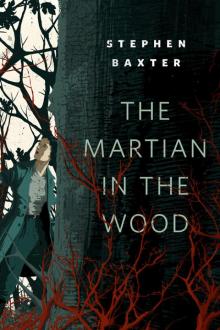 The Martian in the Wood
The Martian in the Wood THE H-BOMB GIRL
THE H-BOMB GIRL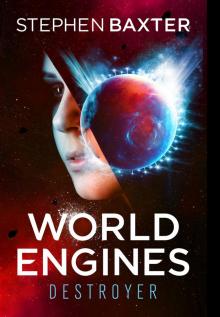 World Engine
World Engine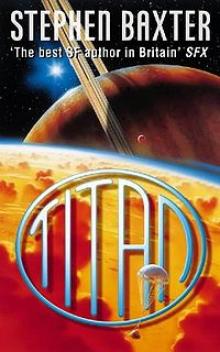 Titan n-2
Titan n-2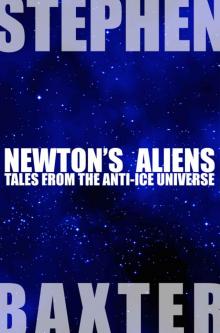 Newton's Aliens: Tales From the Anti-Ice Universe
Newton's Aliens: Tales From the Anti-Ice Universe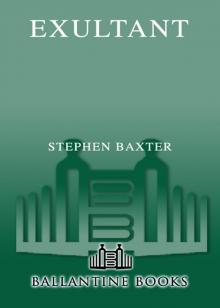 Exultant
Exultant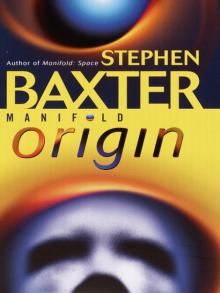 Manifold: Origin
Manifold: Origin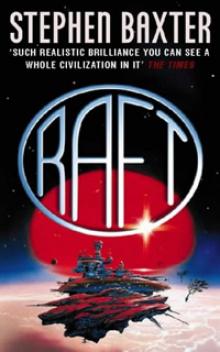 Raft xs-1
Raft xs-1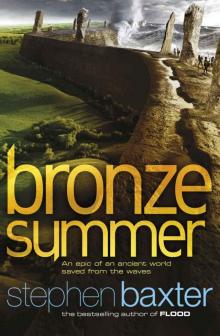 Bronze Summer n-2
Bronze Summer n-2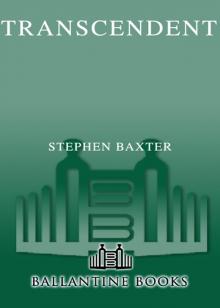 Transcendent
Transcendent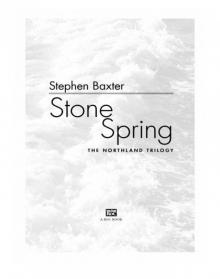 Stone Spring
Stone Spring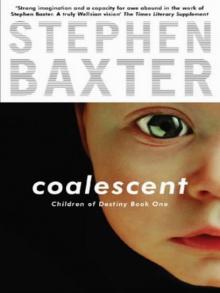 Coalescent
Coalescent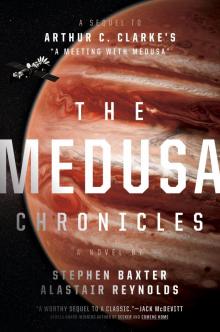 The Medusa Chronicles
The Medusa Chronicles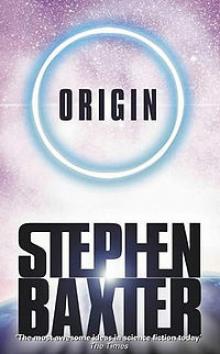 Origin m-3
Origin m-3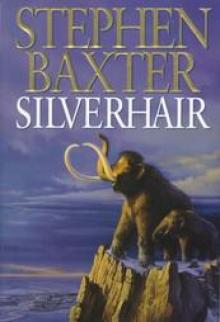 Silverhair tm-1
Silverhair tm-1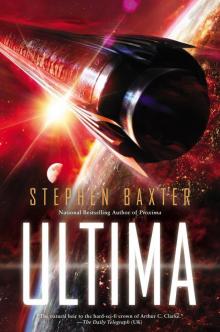 Ultima
Ultima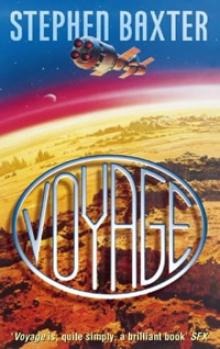 Voyage n-1
Voyage n-1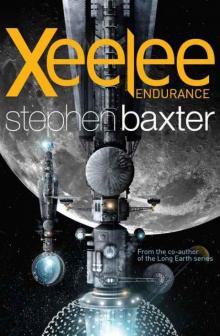 Xeelee: Endurance
Xeelee: Endurance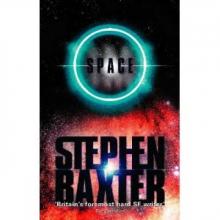 Space m-2
Space m-2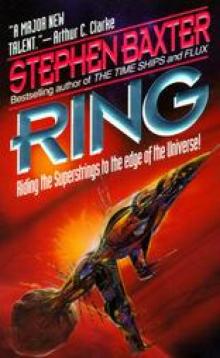 Ring xs-4
Ring xs-4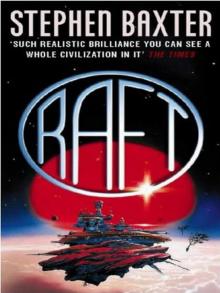 Raft
Raft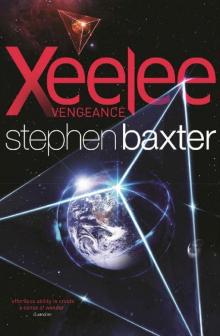 Xeelee: Vengeance
Xeelee: Vengeance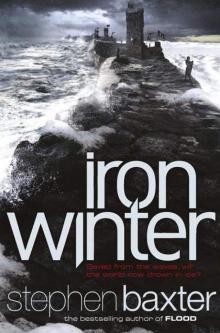 Iron Winter n-3
Iron Winter n-3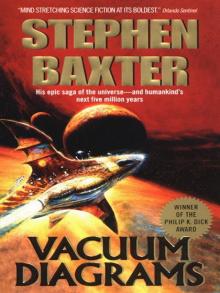 Vacuum Diagrams
Vacuum Diagrams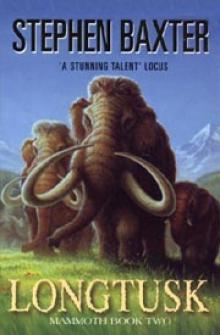 Longtusk tm-2
Longtusk tm-2 Proxima
Proxima Evolution
Evolution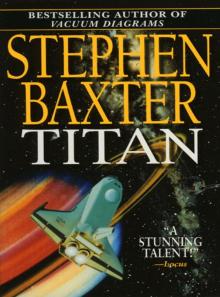 Titan
Titan Last and First Contacts (Imaginings)
Last and First Contacts (Imaginings)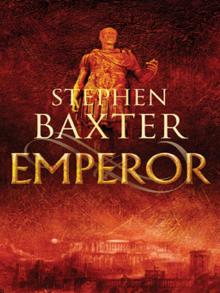 Emperor
Emperor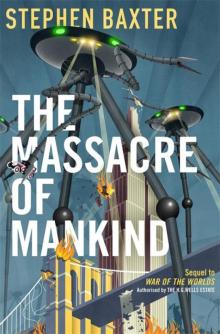 The Massacre of Mankind
The Massacre of Mankind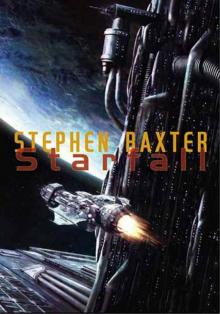 Starfall
Starfall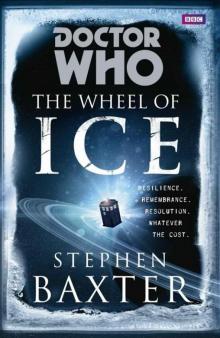 Doctor Who - The Wheel of Ice
Doctor Who - The Wheel of Ice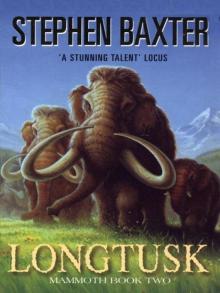 Longtusk
Longtusk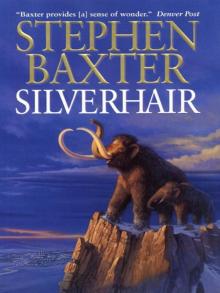 Silverhair
Silverhair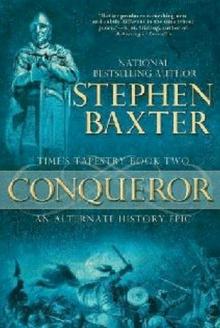 Conqueror tt-2
Conqueror tt-2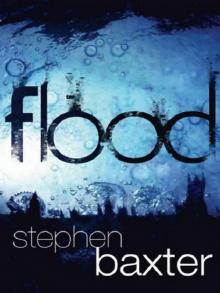 Flood
Flood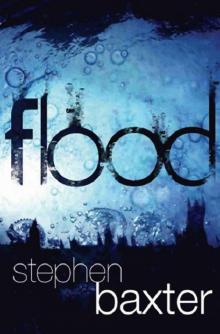 Flood f-1
Flood f-1 Emperor tt-1
Emperor tt-1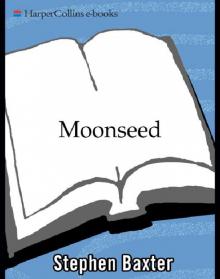 Moonseed
Moonseed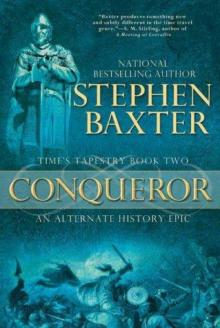 Conqueror
Conqueror Timelike Infinity xs-2
Timelike Infinity xs-2 The Ghost Pit
The Ghost Pit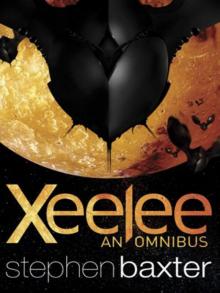 Xeelee: An Omnibus: Raft, Timelike Infinity, Flux, Ring
Xeelee: An Omnibus: Raft, Timelike Infinity, Flux, Ring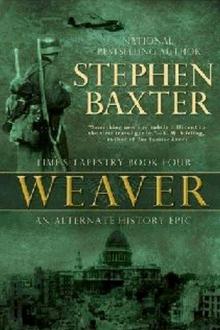 Weaver tt-4
Weaver tt-4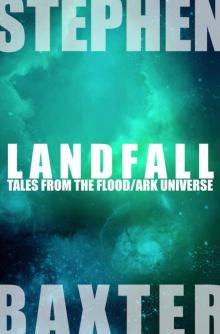 Landfall: Tales From the Flood/Ark Universe
Landfall: Tales From the Flood/Ark Universe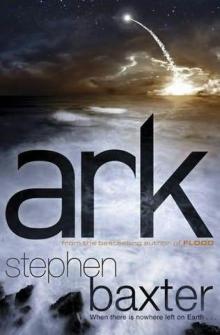 Ark
Ark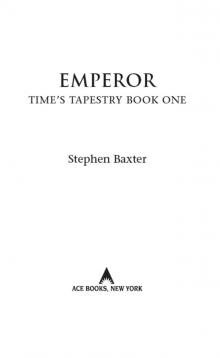 Emperor: Time’s Tapestry Book One
Emperor: Time’s Tapestry Book One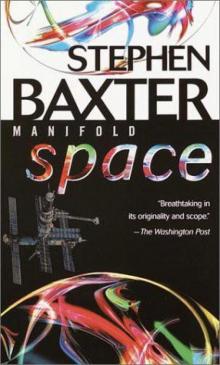 Space
Space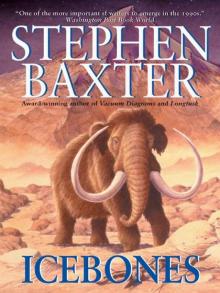 Icebones
Icebones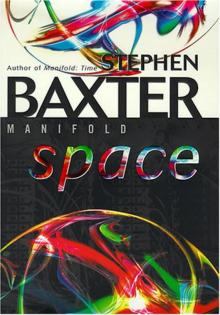 Manifold: Space
Manifold: Space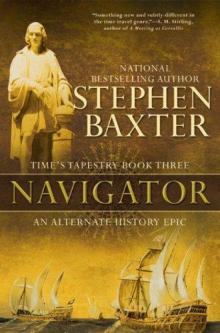 Navigator
Navigator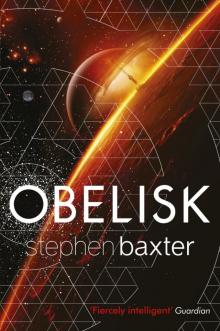 Obelisk
Obelisk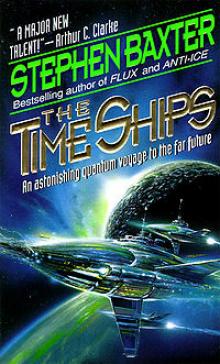 The Time Ships
The Time Ships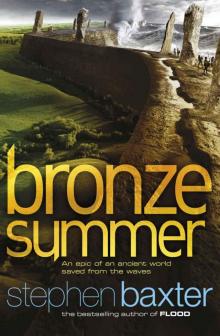 Bronze Summer
Bronze Summer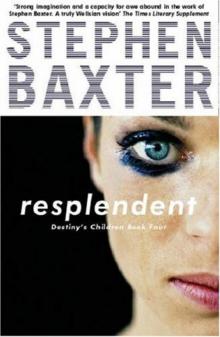 Resplendent
Resplendent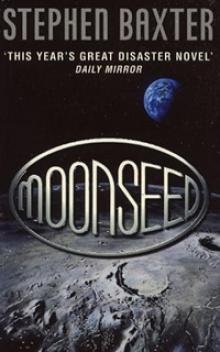 Moonseed n-3
Moonseed n-3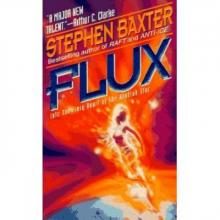 Flux xs-3
Flux xs-3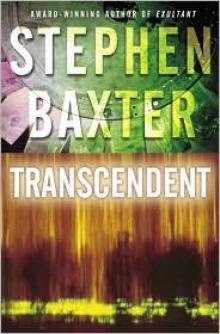 Transcendent dc-3
Transcendent dc-3 Icebones tm-3
Icebones tm-3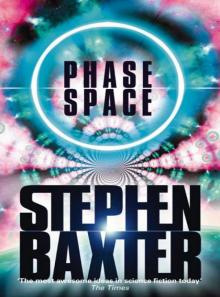 Phase Space
Phase Space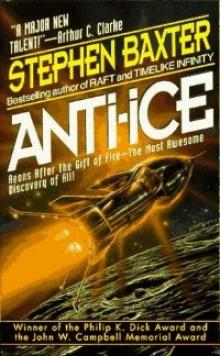 Anti-Ice
Anti-Ice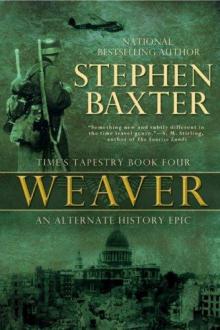 Weaver
Weaver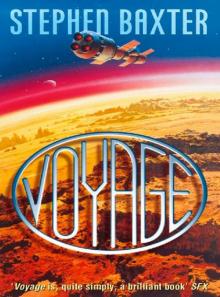 Voyage
Voyage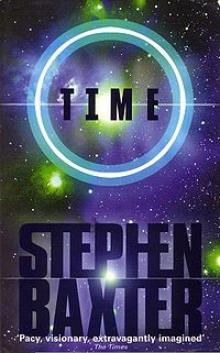 Time m-1
Time m-1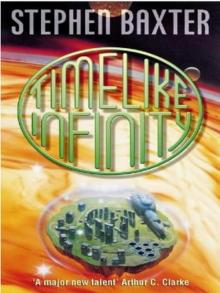 Timelike Infinity
Timelike Infinity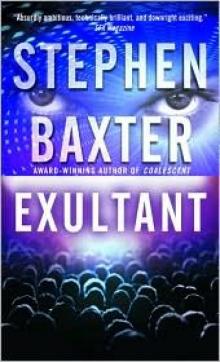 Exultant dc-2
Exultant dc-2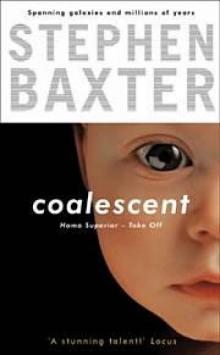 Coalescent dc-1
Coalescent dc-1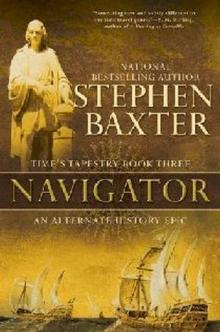 Navigator tt-3
Navigator tt-3